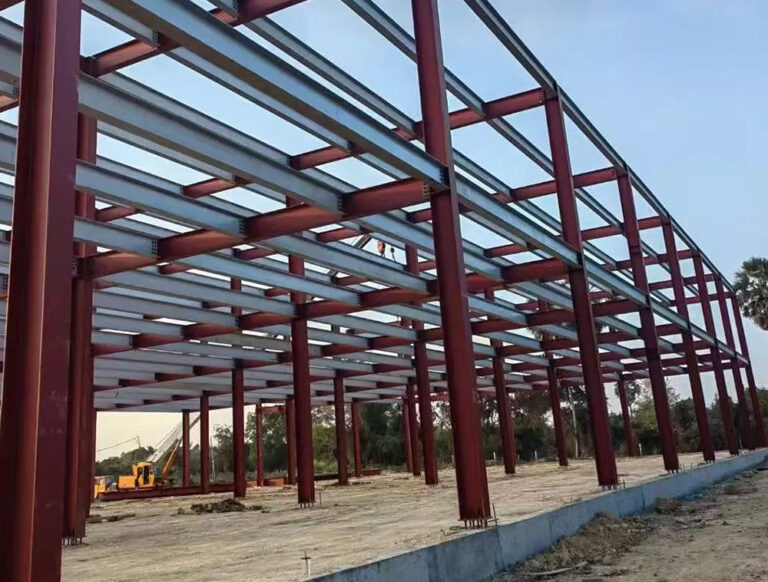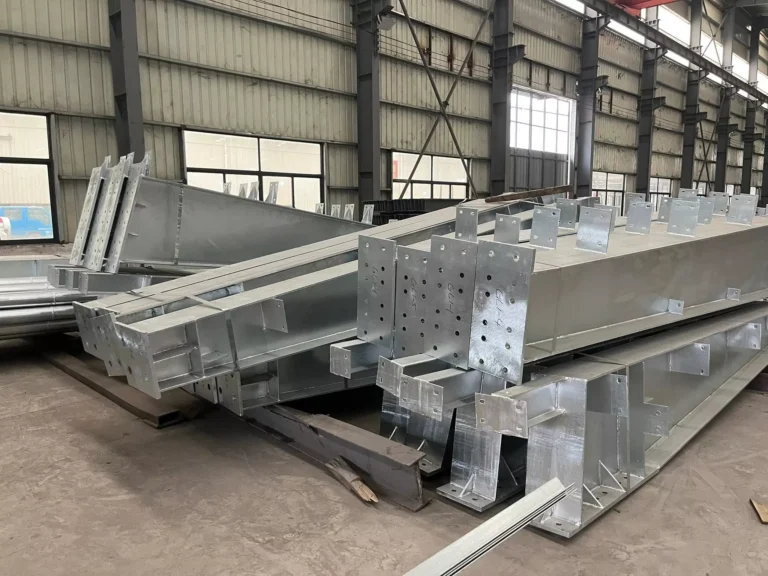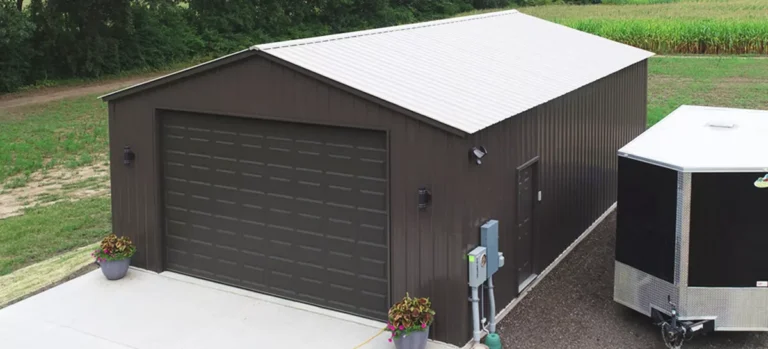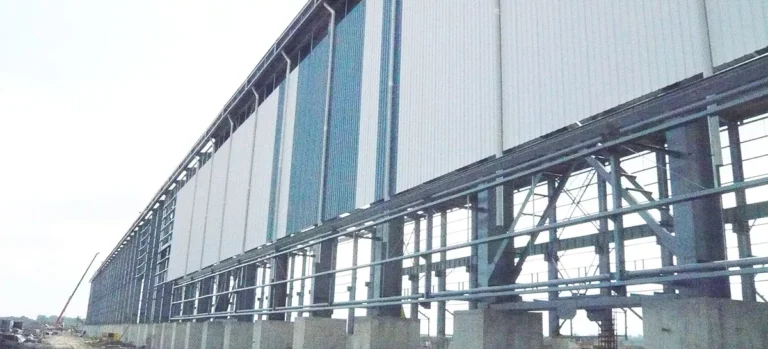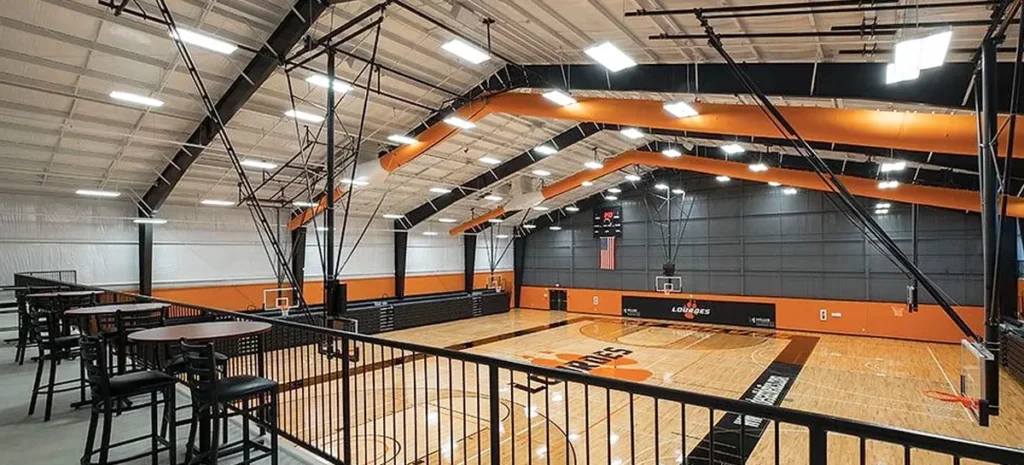
Proper lighting is essential for any metal building, whether it’s used for commercial, industrial, agricultural, or residential purposes. Since metal structures often have large, open spaces and high ceilings, choosing the right lighting system can significantly enhance functionality, safety, and energy efficiency. In this article, we explore five efficient ways to illuminate metal buildings, helping you create a well-lit environment that meets your operational needs while minimizing energy consumption.
1. LED Lighting
Overview: LED (Light Emitting Diode) lighting has become the go-to choice for energy-efficient, long-lasting illumination. LEDs use significantly less electricity than traditional lighting options and are available in various forms, including high bay lights, floodlights, and strip lights, making them versatile for different areas of a metal building.
Benefits:
- Energy Efficiency: LEDs use up to 75% less energy than incandescent or fluorescent bulbs, helping reduce utility costs in large metal structures.
- Long Lifespan: With an average lifespan of 50,000 hours or more, LED lights reduce the need for frequent replacements, which is especially beneficial in buildings with high ceilings.
- Brightness and Coverage: LEDs provide bright, uniform light, ideal for illuminating large spaces like warehouses or workshops.
Best For: Industrial warehouses, manufacturing plants, garages, and offices within metal buildings. High bay LED lights are especially suited for buildings with ceilings over 20 feet high.

2. Skylights and Natural Lighting
Overview: Utilizing natural light is one of the most energy-efficient ways to illuminate a metal building. Installing skylights or translucent roof panels allows sunlight to enter the space during the day, reducing the need for artificial lighting.
Benefits:
- Energy Savings: Natural light reduces dependency on electric lighting during daylight hours, lowering electricity costs.
- Improved Work Environment: Studies show that natural lighting improves mood, productivity, and well-being, making it a great choice for workplaces.
- Sustainability: Relying on natural light contributes to environmentally friendly building operations.
Best For: Workshops, agricultural buildings, storage spaces, and any building that operates primarily during the daytime. Skylights are especially effective for larger buildings with expansive roof areas.
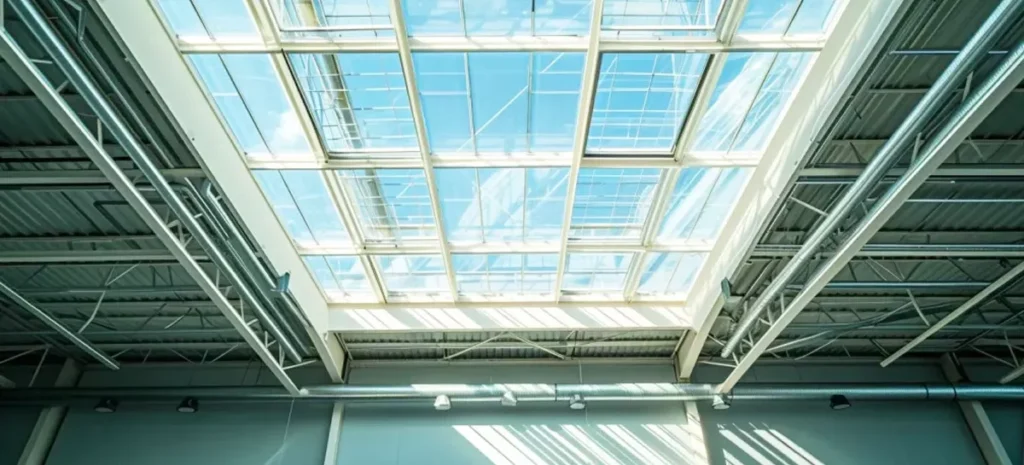
3. Motion Sensor Lighting
Overview: Motion sensor lighting systems are an intelligent way to save energy by ensuring lights are only on when needed. These systems detect movement and automatically turn lights on or off based on activity within the space.
Benefits:
- Energy Efficiency: Lights automatically turn off when no one is in the room or area, preventing wasted electricity.
- Convenience: Motion sensors eliminate the need for manual control, making them ideal for areas that see intermittent use, like storage rooms, garages, and exterior spaces.
- Improved Safety: Automatic lighting ensures that areas are well-lit when needed, enhancing safety in dark or hard-to-reach locations.
Best For: Storage areas, hallways, exterior lighting, or rarely accessed spaces like basements or utility rooms within metal buildings.
4. High Bay Lighting
Overview: High bay lighting is designed specifically for buildings with high ceilings, typically over 20 feet. These fixtures provide powerful, widespread illumination for large open spaces, making them ideal for warehouses, factories, and gymnasiums.
Benefits:
- Uniform Illumination: High bay lights distribute light evenly across large areas, reducing shadows and improving visibility.
- Energy Efficiency: LED high bay lights are more energy-efficient compared to older HID (high-intensity discharge) or metal halide fixtures, providing excellent light quality while consuming less power.
- Durability: High bay lights are built for industrial environments and can withstand harsh conditions, such as temperature extremes and dust.
Best For: Warehouses, manufacturing plants, gymnasiums, and large indoor storage facilities that require intense and uniform light from high ceiling heights.
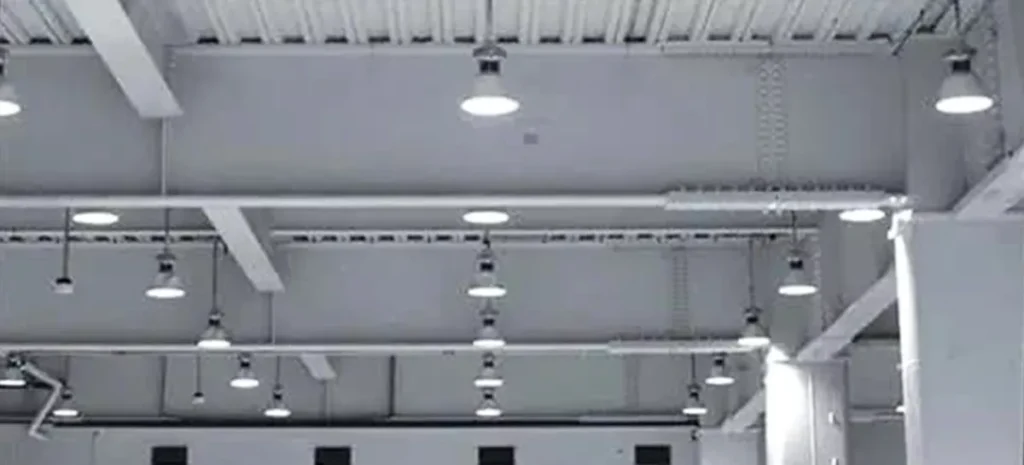
5. Task-Specific Lighting
Overview: Task lighting focuses on providing concentrated light for specific areas or tasks within a metal building. It’s often used in workshops, offices, or any space where detailed work is performed. Task lighting can include adjustable desk lamps, under-cabinet lights, or even dedicated LED strips for workstations.
Benefits:
- Enhanced Productivity: Proper task lighting reduces eye strain and improves focus, making it easier for workers to complete detailed or precision work.
- Energy Efficiency: Task lighting only illuminates the areas where light is needed, reducing the energy waste associated with lighting entire spaces.
- Flexibility: Adjustable and directional task lighting allows users to control where light is directed, ensuring optimal brightness for specific tasks.
Best For: Workshops, offices, garages, or any part of the building where specific tasks require focused lighting, such as assembly lines or repair stations.
Conclusion
Choosing the right lighting solutions for your metal building can improve energy efficiency, safety, and productivity. LED lighting, with its energy-saving benefits and long lifespan, remains a popular choice for large metal buildings, while natural light from skylights offers sustainability and cost savings during daylight hours. Motion sensor lights and high bay fixtures optimize efficiency for specific spaces, and task lighting ensures that precision workstations are well-illuminated.
By combining these lighting methods, you can create an efficient, well-lit environment in your metal building that supports both operational needs and long-term savings.
For more information on metal buildings and the best lighting solutions for your project, contact Ganyo Steel Structure at lizzy@ganyosteelbuilding.com. We’re here to help you design and optimize your metal building for efficiency and durability.day at lizzy@ganyosteelbuilding.com to discuss your project and discover how a pre-engineered building can benefit you.

